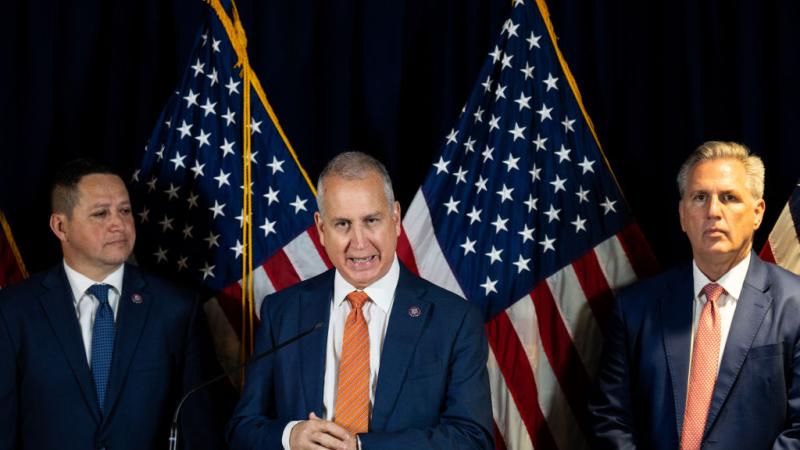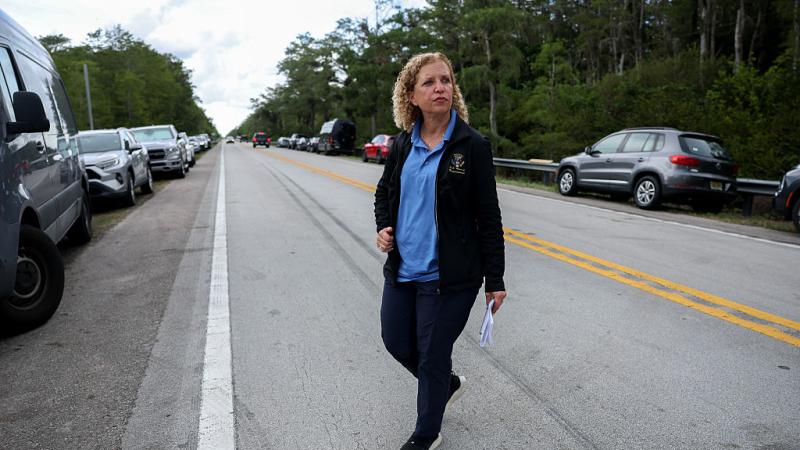Confirmed influenza cases hit rock-bottom, puzzling infectious disease experts
Experts say a variety of factors — from social distancing to mask usage — might be in play; data suggest more complicated picture.
Even as worries persist over increasing COVID-19 cases in the United States, cases of another virus — influenza — have plummeted relative to their number a year ago.
The Centers for Disease Control and Prevention's FluView influenza tracker lists an influenza-positive test percentage of 0.3% for week 42 of 2020 — a total of 33 positive tests out of 10,809 specimens. That's down sharply from 2.4% during the same week last year.
Visits to healthcare providers for "influenza-like illnesses" during week 42 were also down this year from the last, though not as sharply: This week that rate was 1.2% of all such visits, while last year it was 1.7%.
Sharp drops in influenza have also been observed elsewhere throughout the world over the past several months. World Health Organization global flu surveillance shows a severe dropoff in flu cases starting in early April; whereas in past years flu cases are sustained at a steady plateau over the mid-year months — driven by the Southern Hemisphere's flu season — WHO observation has cases more or less disappearing from April onwards.
"Globally, influenza activity remained at lower levels than expected for this time of the year," the WHO wrote earlier this month, "though increased detections were reported in some countries."
"In the temperate zones of the southern hemisphere," the organization continued, "the influenza season remained low or below baseline. Despite continued or even increased testing for influenza in some countries in the southern hemisphere, very few influenza detections were reported."
COVID measures may have played a role, though country-level data complicates things
Some experts have, perhaps unsurprisingly, cited the still-ongoing lockdowns, mitigation measures, mask mandates and social distancing orders as possible explanations for reduced flu rates worldwide.
"It does seem that the rates are lower," Phyllis Kanki, an infectious disease professor at Harvard University's T.H. Chan School of Public Health, told Just the News. "I think COVID mitigation measures are likely to lower levels. Some of these mitigation measures may have been particularly effective for high-risk groups for flu, like the elderly and immunosuppressed."
Nevertheless, she acknowledged, at this point there are "more questions than answers."
Centers for Disease Control and Prevention spokesman Scott Pauley offered similar speculation. "We saw flu rates drop in the Southern Hemisphere possibly due to stringent mitigation measures like social distancing and mask wearing," he said.
"Indicators of flu activity dropped dramatically in the U.S. after the recognition of widespread community transmission of SARS-CoV-2," he continued, "and remained at historically low levels over the summer months. These declines coincide with the use of measures to prevent COVID-19 transmission."
Public health officials have argued that the relatively novel tactics of mass quarantining, shelter-in-place orders and widespread mask usage were necessary to stop the spread of COVID-19; if so, it may very well follow that such measures limited the spread of influenza as well.
Yet coronavirus cases nevertheless continued to circulate in many areas with stringent lockdowns. New York, for instance, was put under a stay-at-home order on March 22 of this year, yet the state was still recording as many as 10,800 cases in one day over a month afterwards, suggesting that influenza may have been capable of spreading during that time as well.
Yet influenza cases were still down sharply in New York during that time: The state recorded about a 12% positive rate for influenza tests the week the stay-at-home order went into effect, less than half the rate for the same week the year before. By the first week of Apr. 2020 that rate had fallen to around 1.7%; the same week in 2019 it was nearly 20%.
Conversely, in instances where authorities did not lock down or issue stay-at-home orders, flu cases were also low. World Health Organization flu surveillance for Sweden shows an influenza dropoff in that country similar to the rest of the world. A similar decline was observed in South Korea, which remained largely open and avoided lockdown measures through an early sophisticated testing and quarantine system.
Jay Bhattacharya, a professor of medicine at Stanford University, is skeptical about the conventional wisdom that COVID mitigation efforts suppressed this year's flu.
"I think we can dismiss out of hand that that masks and social distancing are responsible for the decline in flu incidence this season," he told Just the News, while also confessing to being uncertain as to why levels were so low. "First, why would they work for the flu, but not for COVID? Second, there is randomized evidence that those interventions do not work to suppress influenza incidence."
Bhattacharya was referring to a substantial body of evidence indicating that masks do not stop the spread of influenza. A World Health Organization review from last year found "no evidence" that masks helped to stop influenza transmission. The public health group had reviewed 10 separate randomized, controlled trials on mask usage to come to that determination.
Another possible explanation could lie in the complex and still little-understood biological interactions between the human body, the influenza virus, and SARS-Cov-2. A study published last month by a team of Yale researchers examining interactivity between rhinovirus and influenza concluded that "one respiratory virus can block infection with another through stimulation of antiviral defences in the airway mucosa."
Such findings, the researchers wrote, "should be considered when designing interventions for seasonal influenza epidemics and the ongoing COVID-19 pandemic."
Although still something of a mystery, the low flu numbers are welcome to public health officials who have expressed grave concern that a dual COVID-19 pandemic and influenza season could wreak havoc over the course of the winter.
Whether the numbers remain low, of course, remains to be seen. "As the weather cools off and more people move indoors, and more schools and businesses reopen, we may see increased transmission," CDC spokesman Scott Pauley said.
"What will happen this year is uncertain," he added, "but we are prepared for COVID-19 and seasonal flu to circulate at the same time."
The Facts Inside Our Reporter's Notebook
Links
- CDC flu surveillance for Week 42 of 2020
- CDC flu surveillance for Week 42 of 2019
- WHO's global flu surveillance
- WHO influenza update, Oct. 12
- New York's coronavirus numbers
- New York State's Mar. 21, 2020 flu report
- New York State's Mar. 23, 2019 flu report
- New York State's Apr. 4, 2020 flu report
- New York State's Apr. 6, 2019 flu report
- Just the News: 2019 WHO review found no evidence masks work to stop influenza
- Yale study on rhinoviruses and influenza
















